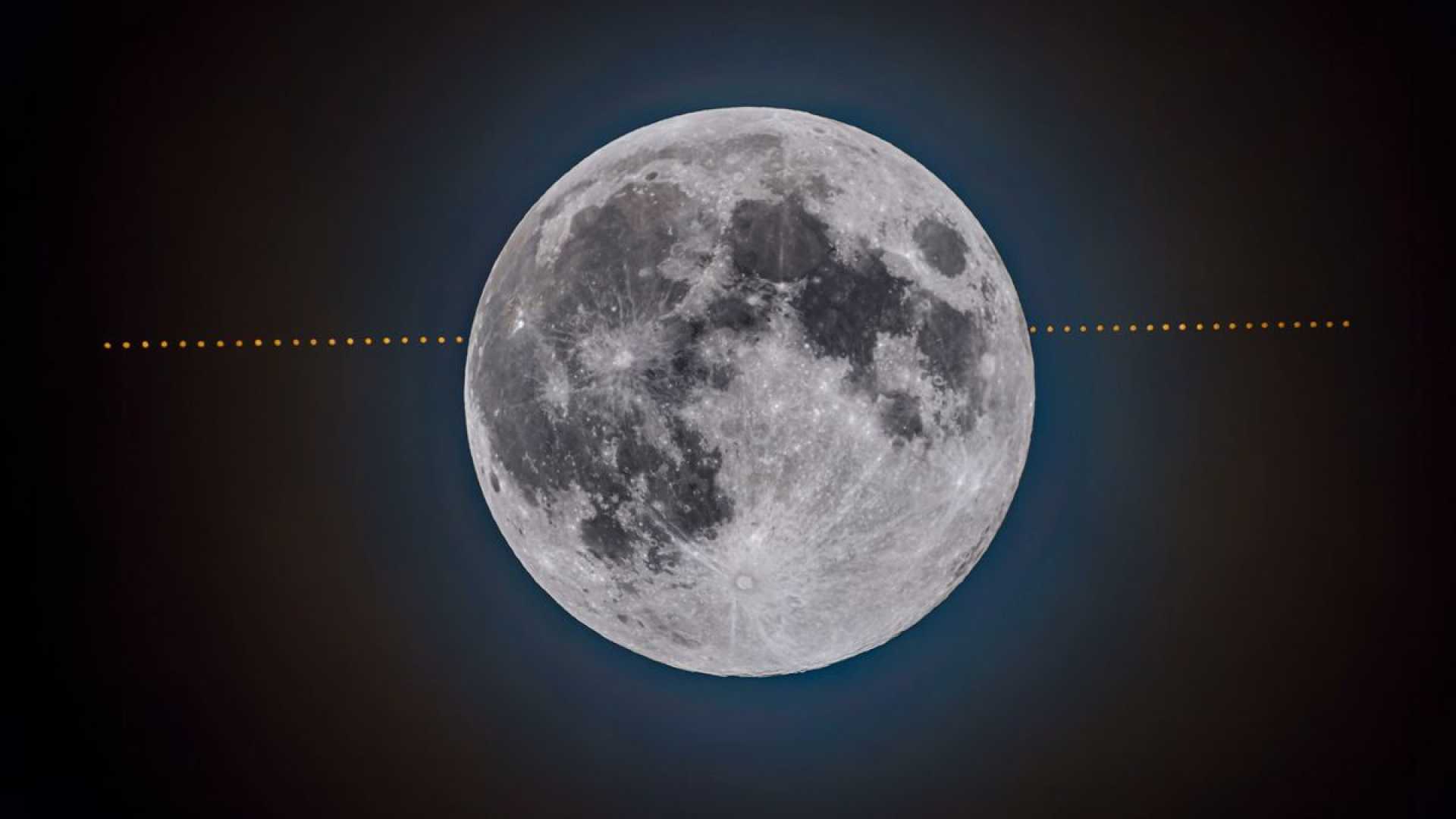World
Wolf Moon to Occult Mars in Rare Celestial Event on January 13, 2025

The first full moon of 2025, known as the Wolf Moon, will coincide with a rare lunar occultation of Mars on January 13, offering skywatchers across North America a stunning celestial event. According to NASA, the full moon will reach its peak at 5:27 p.m. EST, just hours before it passes in front of the Red Planet, temporarily obscuring it from view.
The Wolf Moon, named by The Old Farmer's Almanac in the 1930s, derives its name from the increased howling of wolves during winter. This year, the full moon in Cancer also carries astrological significance, encouraging reflection on personal growth and relationships over the past six months.
The lunar occultation of Mars will be visible across much of the contiguous United States and parts of Canada. Mars, shining at its brightest magnitude of -1.3, will be nearly 40,000 times dimmer than the moon, making binoculars or a telescope essential for viewing the event. The disappearance and reappearance of Mars will take approximately 30 seconds to a minute, depending on the observer’s location.
In Washington, D.C., for example, Mars will disappear behind the moon at 9:16 p.m. EST and reappear at 10:30 p.m. EST. Observers in Seattle will witness a partial occultation, with Mars skimming the moon’s edge for about seven minutes starting at 6:27 p.m. PST. Meanwhile, those in Miami will see Mars disappear at 9:26 p.m. EST and reappear just 27 minutes later.
This rare event marks the first lunar occultation of Mars visible in North America since 2022 and the next favorable one won’t occur until February 5, 2042. Mars will reach opposition on January 15, 2025, appearing at its largest and brightest for the year.
Joe Rao, an instructor at New York’s Hayden Planetarium, emphasized the significance of the event, noting that such occultations are infrequent and often spark public curiosity. ‘People unaware of the event might mistake Mars for a UFO,’ Rao said. ‘It’s a reminder of how dynamic and awe-inspiring our night sky can be.’
For those unable to witness the event firsthand, Space.com and other astronomy platforms will provide live updates and images. Skywatchers are encouraged to share their photos and experiences online, contributing to a global celebration of this celestial phenomenon.












